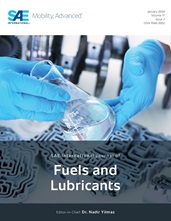Methodology for Predictive Friction Modeling in Direct-Acting Mechanical Bucket Valvetrain System
- Event
- Content
- Valvetrain friction can represent a substantial portion of overall engine friction, especially at low operating speed. This paper describes the methodology for predictive modeling of frictional losses in the direct-acting mechanical bucket tappet-type valvetrain. The proposed modeling technique combines advanced mathematical models based on established theories of Hertzian contact, hydrodynamic and elastohydrodynamic lubrication (EHL), asperity contact of rough surfaces, flash temperature, and lubricant rheology with detailed measurements of lubricant properties and surface finish, driven by a detailed analysis of valvetrain system kinematics and dynamics. The contributions of individual friction components to the overall valvetrain frictional loss were identified and quantified. Calculated valvetrain friction was validated against motored valvetrain friction torque measurements on two engines. The system friction was analyzed across the operating speed range and at several oil supply temperatures as well as varying component surface finishes. A good agreement was observed between simulated and measured valvetrain friction torque suggesting that the proposed analytical methodology and the tool can be very useful in guiding new engine design and enhancing the performance of a given valvetrain design.
- Pages
- 16
- Citation
- Okarmus, M., Keribar, R., Zdrodowski, R., and Gangopadhyay, A., "Methodology for Predictive Friction Modeling in Direct-Acting Mechanical Bucket Valvetrain System," SAE Int. J. Fuels Lubr. 8(1):1-15, 2015, https://doi.org/10.4271/2015-01-0677.
